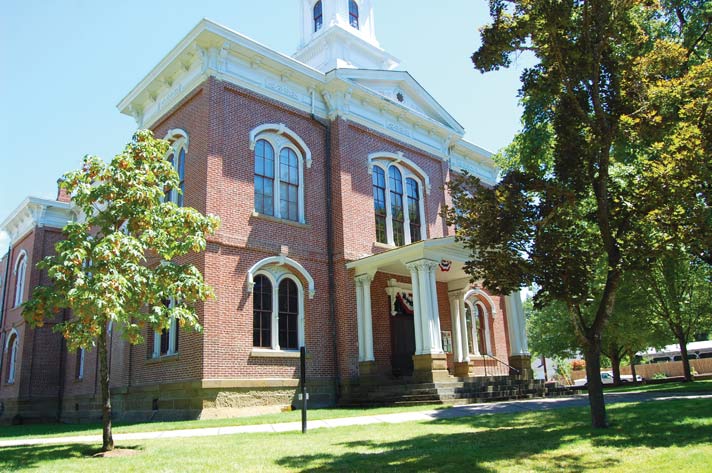A Few Minutes with the Mayor – February 2017
Each New Year finds me more perplexed than usual regarding the subject matter for this column. Due to my degree in history, I am tempted to write something history-related, but current events usually take precedence. So here I am, reminiscing about a world long passed… the decades of the 1930s, 1940s, and 1950s.
If anyone wants to see visible evidence of change in this world, a city is the place to look, not the countryside. When The Wizard of Oz opened at one of our local neighborhood theaters, it cost my parents ten cents for my admission. To save money, we walked from our Manhattan apartment to the theater, a mile away. Four years later, I’d travel that same path solo, but to another older, much smaller theater within the same block, one where they played old movies for a ten cent admission. I was twelve when I first saw Fred and Ginger dance on that magical screen in their signature film, Top Hat. Twelve is an impressionable age. But it wasn’t Fred who impressed me; all I saw was Ginger who, in my adolescent eyes, glowed like some angel from heaven. While walking back along Broadway, mentally dancing “Cheek to Cheek,” dodging taxicabs, trolley cars, and people, I lamented that nowhere in the entire Upper West Side would I find someone like Ginger. But I was wrong… there was a double and one my age at that. Upon meeting her, my fate was sealed with her disdainful look that told me I was as welcome as a landlord demanding his overdue rent. Life is so extreme at twelve.
So… where are those two theaters today? Demolished! And what arose in their place? Lincoln Square Performing Arts Center! I have memories of that too when Ginger (yes… the same Ginger I’d seen 42 years earlier) invited me to escort her to a concert and shindig hosted by Zubin Mehta. This time I didn’t walk but rode with her in a limousine to our destination. And yes, it was an evening to remember, but what memory can compete with that of a twelve year-old who discovers what he thinks is true love? Oddly enough, I never told her that story.
The theaters I went to as a child would have disappeared even if Lincoln Center had never been built. The advent of television replaced movie palaces with virtual entertainment centers in our living rooms. However, there is more to this story.
Lincoln Center is located on land once called “San Juan Hill,” a neighborhood of a dozen or so blocks that were home to a population almost exclusively black. Bordering the Irish populated “Hell’s Kitchen,” it had a reputation of street violence. And it was the center of black jazz with artists such as Thelonius Monk residing there. It was also a ripe candidate for government intrusion and social engineering. All that was required was some government bureaucrat. Like all big cities, New York had one… the biggest social engineer of all time, Robert Moses. When approached to find land for the Center project, he was given the excuse he’d been seeking to declare the area a slum, level hundreds of buildings, move the black population out and introduce what became a 75% white, affluent population in the new high rises. Protesting residents took their cause all the way to the Federal Supreme Court, but the judges ruled against them, and over 40,000 people found themselves victims of eminent domain and out of their homes. Most moved to Harlem and the Bronx. Swept under the rug was the human cost of this project.
Could Lincoln Center have been built elsewhere? Undoubtedly… but Moses wanted to change the Upper West Side, so San Juan Hill was leveled, the rich tapestry of an historic neighborhood destroyed, its population, equivalent to that of Ashland and Central Point, forcibly made homeless.
This is what happens when government grows too large and too powerful. This is what happens when we the people forget we are the government. Elected officials are not and should not be all-powerful.
Aren’t we glad we live in a small town?

 Paul Becker is the current Mayor of Historic Jacksonville, Oregon.
Paul Becker is the current Mayor of Historic Jacksonville, Oregon.